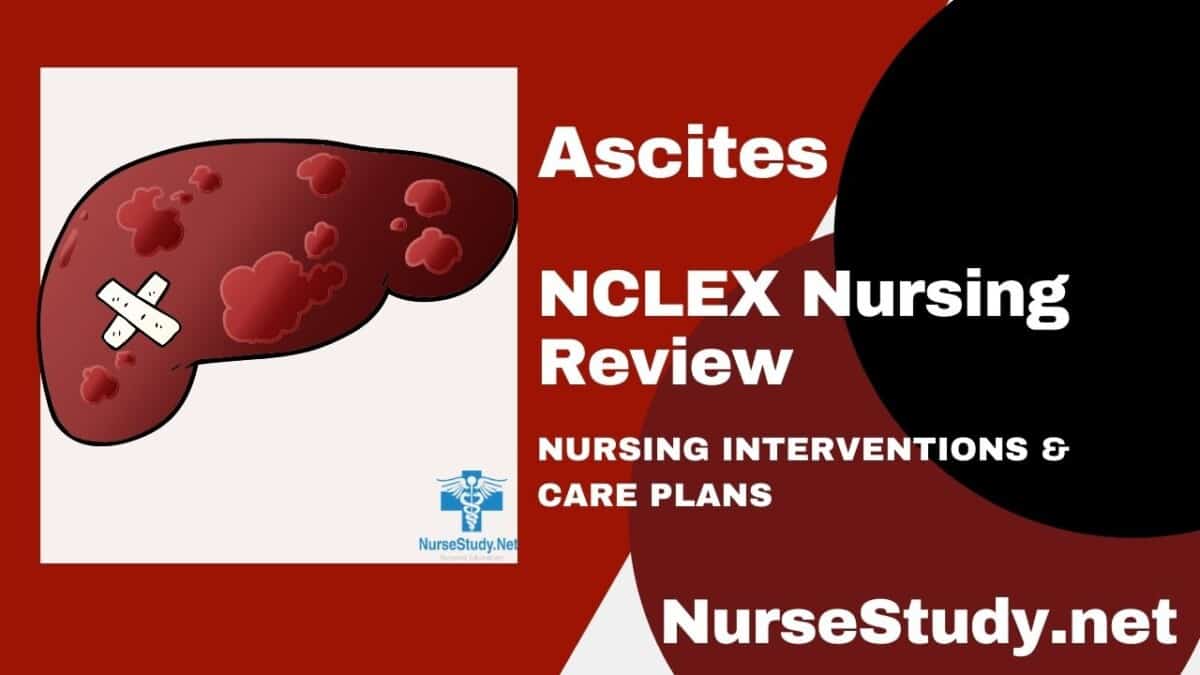Ascites, characterized by fluid accumulation in the peritoneal cavity, presents a significant challenge in nursing care. This comprehensive guide explores the essential nursing diagnoses, interventions, and care plans for effective patient management.
Understanding Ascites
Ascites primarily results from liver cirrhosis, though various other conditions can cause this fluid accumulation. The pathophysiology involves increased portal pressure and altered fluid dynamics, leading to fluid retention in the peritoneal space.
Clinical Manifestations
Common symptoms include:
- Abdominal distention and discomfort
- Increased abdominal girth
- Early satiety and appetite changes
- Breathing difficulties
- Peripheral edema
- Mobility challenges
- Fatigue and weakness
Nursing Assessment
Physical Assessment
Abdominal examination
- Measure abdominal girth at the umbilical level
- Check for shifting dullness
- Assess for fluid wave
- Monitor for umbilical eversion
Vital Signs
- Blood pressure changes
- Heart rate variations
- Respiratory rate alterations
- Temperature monitoring
Additional Assessments
- Daily weight measurements
- Fluid intake and output tracking
- Nutritional status evaluation
- Activity tolerance assessment
Nursing Care Plans for Ascites
1. Excess Fluid Volume
Nursing Diagnosis Statement:
Excess Fluid Volume related to compromised regulatory mechanisms secondary to portal hypertension and decreased plasma osmotic pressure, evidenced by increased abdominal girth, peripheral edema, and weight gain.
Related Factors/Causes:
- Portal hypertension
- Decreased serum albumin
- Sodium retention
- Impaired regulatory mechanisms
- Compromised liver function
Nursing Interventions and Rationales:
Monitor daily weights and abdominal girth
- Provides objective measurement of fluid status
Implement fluid restrictions as ordered
- Prevents further fluid accumulation
Monitor intake and output strictly
- Ensures accurate fluid balance assessment
Assist with paracentesis as needed
- Provides immediate relief from severe ascites
Administer diuretics as prescribed
- Promotes fluid elimination
Desired Outcomes:
- Patient demonstrates decreased abdominal girth
- The patient maintains a stable weight within the target range
- The patient shows an improved comfort level
- The patient exhibits normal vital signs
2. Impaired Physical Mobility
Nursing Diagnosis Statement:
Impaired Physical Mobility related to increased abdominal girth and discomfort, evidenced by difficulty in movement and position changes.
Related Factors/Causes:
- Large abdominal girth
- Muscle weakness
- Fatigue
- Pain with movement
- Respiratory compromise
Nursing Interventions and Rationales:
Assist with position changes
- Prevents skin breakdown and promotes comfort
Encourage progressive activity
- Maintains muscle strength and prevents deconditioning
Provide assistive devices
- Ensures safe mobility
Schedule rest periods
- Prevents excessive fatigue
Desired Outcomes:
- Patient maintains optimal mobility level
- The patient performs ADLs independently
- The patient uses assistive devices correctly
- Patient reports decreased fatigue with activity
3. Compromised Breathing Pattern
Nursing Diagnosis Statement:
Ineffective Breathing Pattern related to diaphragmatic compression from ascites, evidenced by shortness of breath and decreased oxygen saturation.
Related Factors/Causes:
- Abdominal distention
- Diaphragmatic compression
- Increased intra-abdominal pressure
- Reduced lung expansion
Nursing Interventions and Rationales:
Position patient in semi-Fowler’s position
- Reduces diaphragmatic pressure
Monitor respiratory rate and effort
- Identifies early respiratory compromise
Administer oxygen as prescribed
- Maintains adequate oxygenation
Teach breathing exercises
- Improves respiratory efficiency
Desired Outcomes:
- The patient maintains normal respiratory rate and depth
- The patient demonstrates effective breathing techniques
- Patient reports improved comfort with breathing
4. Imbalanced Nutrition: Less Than Body Requirements
Nursing Diagnosis Statement:
Imbalanced Nutrition: Less than Body Requirements related to early satiety and decreased appetite, evidenced by inadequate food intake and weight loss.
Related Factors/Causes:
- Early satiety
- Decreased appetite
- Nausea
- Abdominal pressure
- Altered metabolism
Nursing Interventions and Rationales:
Provide small, frequent meals
- Promotes increased intake despite early satiety
Monitor nutritional intake
- Ensures adequate nutrition
Collaborate with dietitian
- Optimizes nutritional planning
Administer prescribed supplements
- Supplements inadequate oral intake
Desired Outcomes:
- The patient maintains adequate nutritional intake
- The patient demonstrates weight stability
- The patient reports improved appetite
- The patient shows normal laboratory values
5. Risk for Impaired Skin Integrity
Nursing Diagnosis Statement:
Risk for Impaired Skin Integrity related to stretched abdominal skin and edema, as evidenced by risk factors present.
Related Factors/Causes:
- Stretched skin
- Edema
- Pressure from fluid
- Decreased mobility
- Poor tissue perfusion
Nursing Interventions and Rationales:
Assess skin condition regularly
- Identifies early skin changes
Implement turning schedule
- Reduces pressure on the skin
Maintain skin hygiene
- Prevents skin breakdown
Apply prescribed skin treatments
- Protects compromised skin
Desired Outcomes:
- The patient maintains intact skin
- Patient demonstrates understanding of skincare
- The patient reports no skin discomfort
References
- Ackley, B. J., Ladwig, G. B., Makic, M. B., Martinez-Kratz, M. R., & Zanotti, M. (2023). Nursing diagnoses handbook: An evidence-based guide to planning care. St. Louis, MO: Elsevier.
- Aithal GP, Palaniyappan N, China L, Härmälä S, Macken L, Ryan JM, Wilkes EA, Moore K, Leithead JA, Hayes PC, O’Brien AJ, Verma S. Guidelines on the management of ascites in cirrhosis. Gut. 2021 Jan;70(1):9-29. doi: 10.1136/gutjnl-2020-321790. Epub 2020 Oct 16. PMID: 33067334; PMCID: PMC7788190.
- Bc, J. B. D. A., Rosenthal, L., & Yeager, J. J. (2021). Study Guide for Lehne’s Pharmacology for Nursing Care. Saunders.
- Biecker E. Diagnosis and therapy of ascites in liver cirrhosis. World J Gastroenterol. 2011 Mar 14;17(10):1237-48. doi: 10.3748/wjg.v17.i10.1237. PMID: 21455322; PMCID: PMC3068258.
- Garbuzenko DV, Arefyev NO. Current approaches to the management of patients with cirrhotic ascites. World J Gastroenterol. 2019 Jul 28;25(28):3738-3752. doi: 10.3748/wjg.v25.i28.3738. PMID: 31391769; PMCID: PMC6676543.
- Harding, M. M., Kwong, J., & Hagler, D. (2022). Lewis’s Medical-Surgical Nursing: Assessment and Management of Clinical Problems, Single Volume. Elsevier.
- Herdman, T. H., Kamitsuru, S., & Lopes, C. (2024). NANDA International Nursing Diagnoses – Definitions and Classification, 2024-2026.
- Ignatavicius, D. D., Rebar, C., & Heimgartner, N. M. (2023). Medical-Surgical Nursing: Concepts for Clinical Judgment and Collaborative Care. Elsevier.
